In the ever-evolving landscape of SUVs, two vehicles stand out for their innovation and versatility: the Suzuki Across and the Toyota RAV4. Both models share a common lineage, but they cater to different preferences and driving experiences. This article will delve into the technical aspects and innovations of these two popular SUVs, giving you a comprehensive comparison.
Suzuki Across vs Toyota RAV4 – Which car suits you better?
Both models have their strengths – but which one suits you more?
Compare performance, efficiency, price and space directly: Suzuki Across or Toyota RAV4?
Powertrain and Performance
The Suzuki Across impresses with its Plug-In Hybrid engine, delivering a remarkable 306 horsepower and 225 kW of power. It is equipped with a Continuously Variable Transmission (CVT) that offers seamless acceleration. The Across can achieve 0-100 km/h in just 6 seconds, demonstrating its sporty credentials while maintaining a top speed of 180 km/h.
On the other hand, the Toyota RAV4 provides a variety of powertrains, including both Full Hybrid and Plug-In Hybrid options. The performance levels range from 218 HP to the same 306 HP as the Across, depending on the chosen variant. The RAV4’s acceleration times vary; the quickest models can reach 0-100 km/h in as fast as 6 seconds, with all variants capped at the same top speed of 180 km/h. This versatility allows buyers to select an option that best fits their driving style.
Fuel Efficiency and CO2 Emissions
The Suzuki Across shines in the fuel efficiency category with a consumption rating of just 1 L/100 km in electric mode, combined with a CO2 emission of 22 g/km, putting it in an excellent CO2 efficiency class of B. This makes it an eco-friendlier option that doesn’t compromise on power.
The Toyota RAV4’s efficiency also impresses, particularly in its hybrid variants; it has a fuel consumption of approximately 5.6 L/100 km for its non-plug-in models, while it matches the Across with a Plug-In Hybrid alternative that offers similar electric range and CO2 emissions as the Across. However, certain variants of the RAV4 are classified under a less favourable CO2 efficiency class, which may influence environmentally-conscious buyers.
Design and Dimensions
In terms of dimensions, the Suzuki Across measures 4635 mm in length, 1855 mm in width, and 1690 mm in height. It offers a trunk capacity of 490 liters, making it a practical choice for families and outdoor enthusiasts alike. The vehicle’s curb weight of 2075 kg provides stability without hampering performance.
The Toyota RAV4, slightly smaller at 4600 mm in length, shares the same width but is a tad lower at 1685 mm in height. The trunk space is a generous 580 liters in certain variants, offering more room for cargo, which may appeal to practical drivers. The curb weights vary depending on the variant, ranging from 1745 kg to 1910 kg, which offers a range of options depending on the required specifications.
Interior and Technology
Inside, both SUVs boast modern aesthetic designs and user-friendly technology. The Suzuki Across is equipped with an intuitive infotainment system that facilitates seamless smartphone integration. With comfortable seating for five and thoughtful ergonomics, it is designed for both comfort and adventure.
The Toyota RAV4 follows suit with a tech-savvy interior loaded with features such as advanced safety systems and connectivity options. Passengers can enjoy a stylish cabin that emphasizes comfort without sacrificing functionality.
Driving Experience and Innovations
When it comes to driving dynamics, the Suzuki Across offers an all-wheel drive (AWD) system that enhances traction and stability in various driving conditions. This feature makes it a great option for those who plan on venturing off the beaten path.
The RAV4’s driving experience is similarly enhanced with optional front-wheel or all-wheel drive, giving drivers the flexibility to choose based on their needs. Known for its reliability and balance, the RAV4 also comes with Toyota's latest safety technologies, ensuring peace of mind while on the road.
Conclusion: Which SUV Reigns Supreme?
Both the Suzuki Across and Toyota RAV4 are impressive contenders in the SUV market, showcasing superior performance, innovative technology, and practical features. The ultimate choice between the two will often depend on your specific needs: if sharp, spirited performance combined with low emissions is a priority, the Across may hold the edge. Conversely, if versatility and a broader range of options are crucial, the RAV4 is hard to overlook.
Ultimately, prospective buyers should consider their lifestyle, preferences, and driving needs before making a decision. Regardless of the choice, both SUVs promise reliability and an engaging driving experience.
Here’s where it gets real: The technical differences in detail
Costs and Efficiency:
When it comes to price and running costs, the biggest differences usually appear. This is often where you see which car fits your budget better in the long run.
Toyota RAV4 has a significantly advantage in terms of price – it starts at 35100 £, while the Suzuki Across costs 49900 £. That’s a price difference of around 14743 £.
Both cars consume an average of 1 L per 100 km – no difference here.
Range is almost identical – both manage about 75 km on a single charge.
Engine and Performance:
Power, torque and acceleration are the classic benchmarks for car enthusiasts – and here, some clear differences start to show.
Both models deliver identical power – 306 HP each.
Both models accelerate almost equally fast – 6 s from 0 to 100 km/h.
There’s no difference in top speed – both reach 180 km/h.
Space and Everyday Use:
Beyond pure performance, interior space and usability matter most in daily life. This is where you see which car is more practical and versatile.
Both vehicles offer seating for 5 people.
In curb weight, Toyota RAV4 is slightly lighter – 1745 kg compared to 2075 kg. The difference is around 330 kg.
In terms of boot space, the Toyota RAV4 offers to a small extent more room – 580 L compared to 490 L. That’s a difference of about 90 L.
In maximum load capacity, the Toyota RAV4 performs hardly perceptible better – up to 1690 L, which is about 86 L more than the Suzuki Across.
When it comes to payload, Toyota RAV4 evident takes the win – 600 kg compared to 435 kg. That’s a difference of about 165 kg.
Who comes out on top?
Overall, the Toyota RAV4 shows itself to be outperforms in nearly all aspects and secures the title of DriveDuel Champion.
It convinces with the more balanced overall package and proves to be the more versatile choice for everyday use.
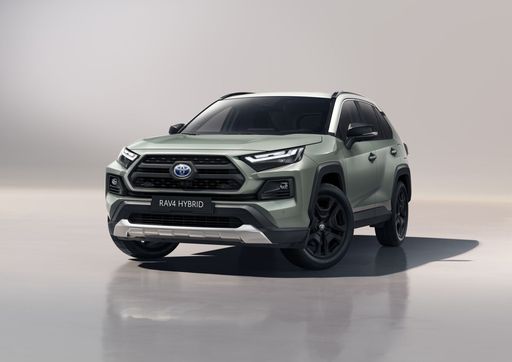 @ Toyota Motor Corporation
@ Toyota Motor Corporation
Toyota RAV4
Suzuki Across
The Suzuki Across presents itself as a robust SUV with an emphasis on efficiency and versatility. Its design merges bold styling with practical features, making it suitable for both urban environments and off-road adventures. Inside, drivers will find a comfortable and well-equipped cabin, designed to enhance the driving experience with modern technology and ample space.
details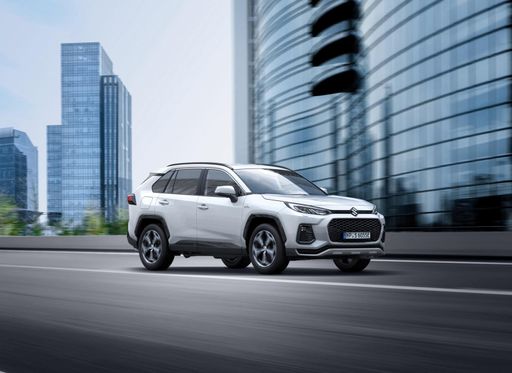 @ Suzuki Motor Corporation
@ Suzuki Motor Corporation
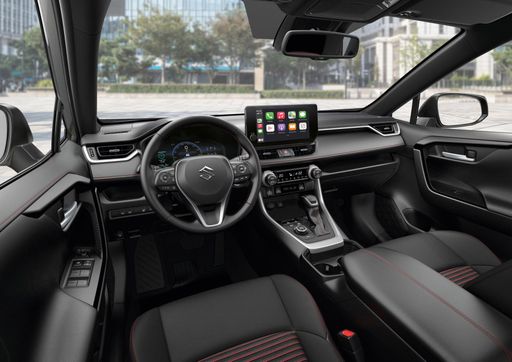 @ Suzuki Motor Corporation
@ Suzuki Motor Corporation
Toyota RAV4
The Toyota RAV4 feels like a sensible friend on the road, marrying dependable practicality with a dash of SUV personality that keeps daily driving from turning dull. Comfortable and easy to live with, it looks tough without shouting and quietly gets the job done — a sensible pick for buyers who want versatility without drama.
details @ Toyota Motor Corporation
@ Toyota Motor Corporation
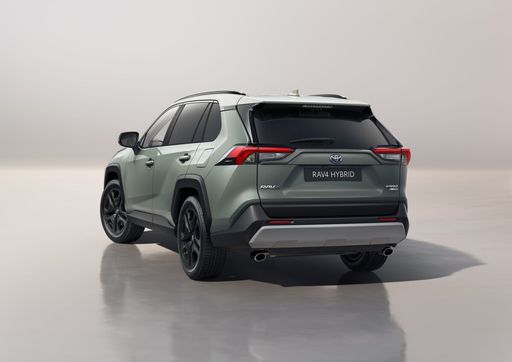 @ Toyota Motor Corporation
@ Toyota Motor Corporation
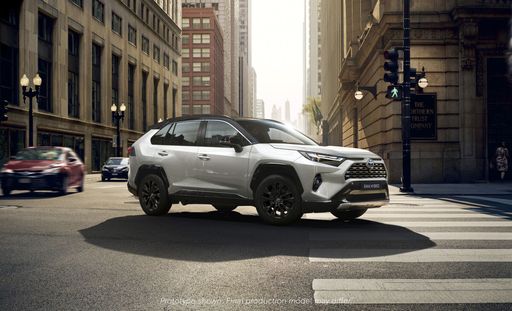 @ Toyota Motor Corporation
@ Toyota Motor Corporation
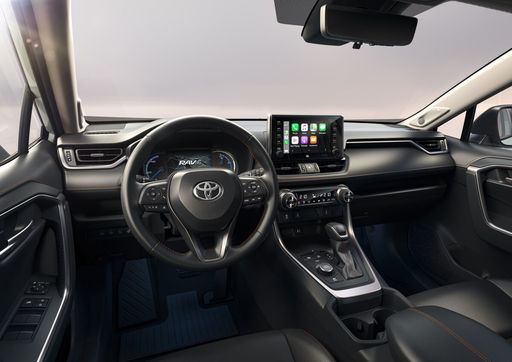 @ Toyota Motor Corporation
@ Toyota Motor Corporation
 @ Suzuki Motor Corporation
@ Suzuki Motor Corporation
|
 @ Toyota Motor Corporation
@ Toyota Motor Corporation
|
|
|
|
Costs and Consumption |
|
|---|---|
|
Price
49900 £
|
Price
35100 - 55700 £
|
|
Consumption L/100km
1 L
|
Consumption L/100km
1 - 5.6 L
|
|
Consumption kWh/100km
-
|
Consumption kWh/100km
-
|
|
Electric Range
75 km
|
Electric Range
75 km
|
|
Battery Capacity
-
|
Battery Capacity
-
|
|
co2
22 g/km
|
co2
22 - 128 g/km
|
|
Fuel tank capacity
55 L
|
Fuel tank capacity
55 L
|
Dimensions and Body |
|
|---|---|
|
Body Type
SUV
|
Body Type
SUV
|
|
Seats
5
|
Seats
5
|
|
Doors
5
|
Doors
5
|
|
Curb weight
2075 kg
|
Curb weight
1745 - 1910 kg
|
|
Trunk capacity
490 L
|
Trunk capacity
520 - 580 L
|
|
Length
4635 mm
|
Length
4600 mm
|
|
Width
1855 mm
|
Width
1855 mm
|
|
Height
1690 mm
|
Height
1685 mm
|
|
Max trunk capacity
1604 L
|
Max trunk capacity
1604 - 1690 L
|
|
Payload
435 kg
|
Payload
390 - 600 kg
|
Engine and Performance |
|
|---|---|
|
Engine Type
Plugin Hybrid
|
Engine Type
Full Hybrid, Plugin Hybrid
|
|
Transmission
Automatic
|
Transmission
Automatic
|
|
Transmission Detail
CVT
|
Transmission Detail
CVT
|
|
Drive Type
All-Wheel Drive
|
Drive Type
Front-Wheel Drive, All-Wheel Drive
|
|
Power HP
306 HP
|
Power HP
218 - 306 HP
|
|
Acceleration 0-100km/h
6 s
|
Acceleration 0-100km/h
6 - 8.4 s
|
|
Max Speed
180 km/h
|
Max Speed
180 km/h
|
|
Torque
-
|
Torque
-
|
|
Number of Cylinders
4
|
Number of Cylinders
4
|
|
Power kW
225 kW
|
Power kW
160 - 225 kW
|
|
Engine capacity
2487 cm3
|
Engine capacity
2487 cm3
|
General |
|
|---|---|
|
Model Year
2024
|
Model Year
2024 - 2025
|
|
CO2 Efficiency Class
B
|
CO2 Efficiency Class
D, B
|
|
Brand
Suzuki
|
Brand
Toyota
|
What drivetrain options does the Suzuki Across have?
The Suzuki Across is offered with All-Wheel Drive.
The prices and data displayed are estimates based on German list prices and may vary by country. This information is not legally binding.
